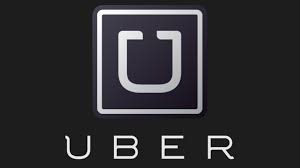Kolkata celebrates one year of uberPOOL in the city. Over 15% of the total Uber trips were on uberPOOL
 Kolkata, June 3, 2017: Uber, the ridesharing app that is redefining urban mobility across the globe, released a Green Index on the occasion of World Environment Day. The launch of uberPOOL in the city helped save 279,000 litres of fuel and 5,948,000 kms travelled, there by curbing 658,000 kg CO2 emissions in Kolkata.
Kolkata, June 3, 2017: Uber, the ridesharing app that is redefining urban mobility across the globe, released a Green Index on the occasion of World Environment Day. The launch of uberPOOL in the city helped save 279,000 litres of fuel and 5,948,000 kms travelled, there by curbing 658,000 kg CO2 emissions in Kolkata.
Pradeep Parameswaran, Head, Central Operation, Uber India said, “Using public transportation and ridesharing is a responsible way to combat traffic congestion and rising pollution levels in the city. With the launch of uberPOOL Kolkata, our goal was to get more people in fewer cars at the tap of a button. We are thrilled that in just a year since launch, over 15% of the total Uber trips in the city were on uberPOOL, with riders in Park Street, Bara Bazaar, Ballygunge and Sector V clocking the highest number of trips. As responsible corporate citizens, we are tirelessly working towards a future where every journey is a shared one and are aim to aim to significantly increase the adoption of uberPOOL in the city.”
According to the Ministry of Road Transport and Highways, the average occupancy of a car is just 28%. Meaning, while a car can carry 4 people, it only carries 1.15 persons. With an aim to make every ride a shared one and increase the adoption of public transportation through first and last mile connectivity, Uber aims to significantly reduce carbon footprint in India.
Uber introduced its most innovative product – uberPOOL in India last year. Launched first in Bengaluru in September 2015, the seamless, reliable and convenient experience of ridesharing accelerated the adoption of uberPOOL in six more cities across the country – Delhi, Hyderabad, Kolkata, Mumbai, Chennai and most recently Pune.
About Uber
Uber’s mission is to bring reliable transportation to everywhere, for everyone. We started in 2010 to solve a simple problem: how do you get a ride at the touch of a button? Six years and more than two billion trips later, we’ve started tackling an even greater challenge: reducing congestion and pollution in our cities by getting more people into fewer cars.
